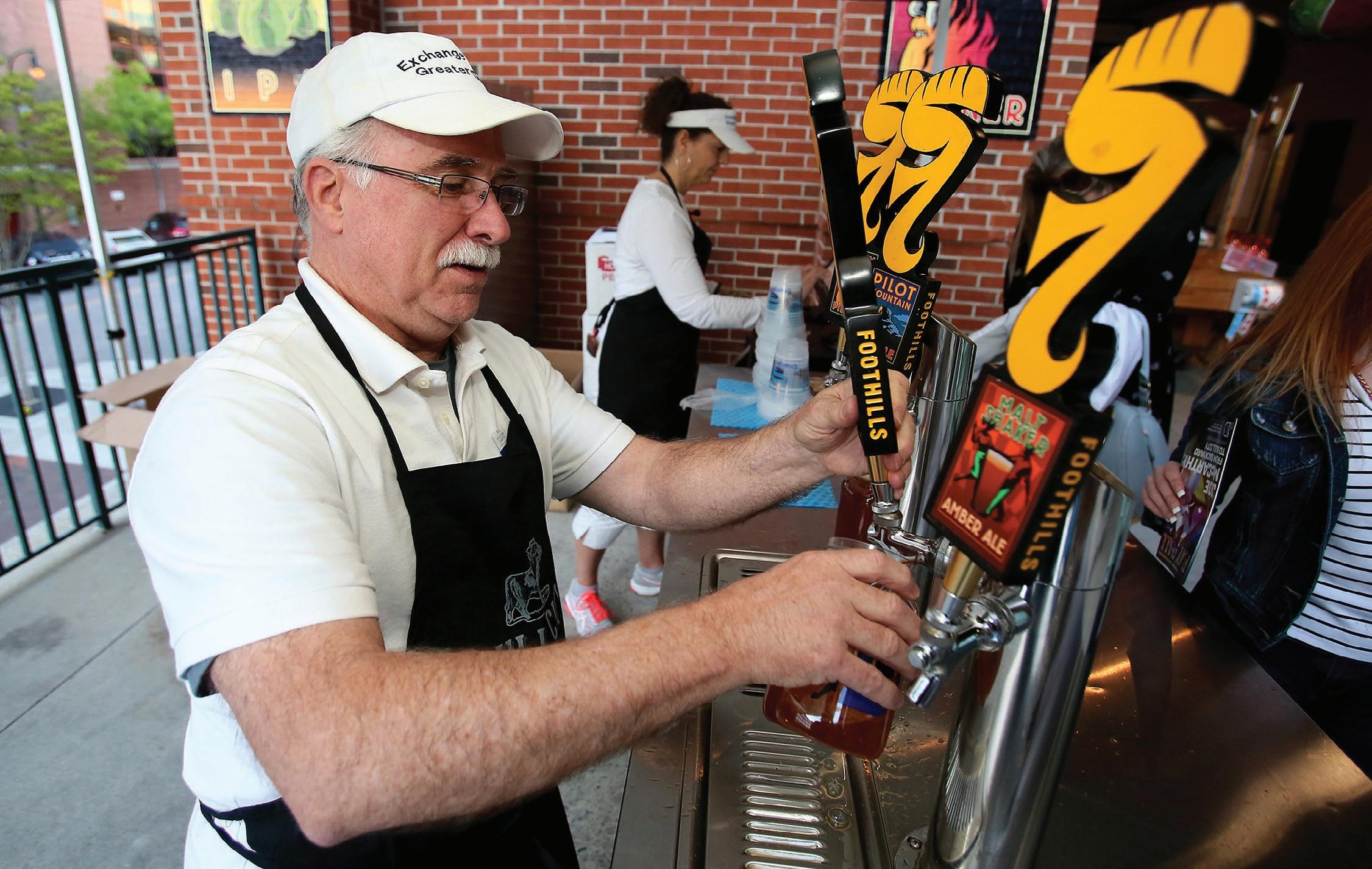Homebrew Guys
Bottling Blues and Patience Brews By Don Rowell and Paul McDermott
“Patience is a virtue” is an old saying that I’m pretty sure most people have heard at some point in their life. It cannot be any more true when it comes to homebrewing. In this issue, we will discuss the importance of patience, how it can relate to bottling, and some ideas to perhaps help with some bottling problems you may be experiencing. Bottling seems like a simple task (which it is), but a lot of people get varying results. Have you ever had your beer come out over-carbonated, under-carbonated or even exploding bottles? We’ll try to debunk the most common problem and help you get the process down. First lets do a quick rundown of how to bottle. After your beer has finished fermentation, you need to transfer your beer to the bottling bucket. Make sure to use a bottling bucket that has volume measurements on the side. This is very important and we’ll explain why in a second. Before you transfer, make sure you sanitize the bucket and all transfer equipment — siphon, hoses, bottle filler, etc. — before you transfer. Also, have your bottles sanitized and ready to go. There are several products on the market to hold the bottles upside down to drain as you transfer the beer and prepare for bottling. Once you have everything sanitized, transfer your beer to the bottling bucket and look at the volume reading on the bucket to see how much beer you actually have to bottle. A recipe may say it’s for five gallons, but after you finish the entire process, the finished volume is not always five gallons. It could be as low as four gallons, which makes a huge difference on how much corn sugar to use for bottling. It varies from batch to batch due to boil volume loss, transfer loss, etc. The final volume in the bucket is what you use to determine how much corn sugar to add in order for it to carbonate to the proper level. Not taking into account the actual volume of beer to bottle is the most common mistake people make that causes problems in getting consistent carbonation results. Some recipes say use ¾ cup or 4-5 ounces of corn sugar for a
five-gallon batch. People who are just starting to brew follow the recipe to a tee and do exactly what it says step by step, but they don’t tell you in the recipe to keep your actual finished volume in mind when bottling. Trust me, we were those same people when we started off and made these very same mistakes. The best way to ensure you have the correct amount of corn sugar is to use 0.75-1.0 oz. (by weight) per gallon of beer. Use 0.75 oz. for English ales, 1.0 oz. for wheat beers and somewhere in-between for American ales. There are several calculators online to help with specific beer styles as well. Once you determine how
58 | Carolina Brew Scene | Summer 2018
much corn sugar to use, add it to two cups of boiling water and let cool to room temperature to mix into the beer. You have to boil the water first in order to pasteurize it to get rid of any unwanted bacteria that could contaminate your beer and to dissolve the corn sugar. After that, simply bottle, cap and wait to carbonate. And that is where the patience part comes in! Man, patience is a hard one! When you first start brewing, you can hardly wait to pop open a bottle and see how good it tastes. Heck, that’s half the reason we got into kegging in the first place (we’ll save kegging for a later issue). It takes about two weeks for ales to properly carbonate at room temperature and we have found that three to four weeks is even better to allow a little more conditioning time. That wait period seems like the longest time ever! Hopefully, you still have some homebrew from a previous batch to help with that. When you’re ready to really try your patience, step into the bigger more complex beers like Barleywines and Imperial Stouts. They can take 6-12 months to hit their peak. They are so full of flavors, it takes them a while to really meld together. We usually take our Barleywine out eight months and as far as two years. Of course, we break out a bottle from time to time in between, just to see how it’s doing ... Bottling and patience certainly go together and the results are worth it. Don’t rush it because you could drink up all your great homebrew before it even reaches its prime. When it comes to long wait beers, it helps to have a few quick turnaround brews like blondes and other light ales in process to help with your patience. ’Til next time … happy brewing, and remember that good things come to those who wait! Cheers! One side note about bottling: Leaving the beer in the secondary fermenter for too long — more than six weeks for ales — or when making high gravity beers, you may have to add fresh yeast at bottling time to achieve good carbonation.


















